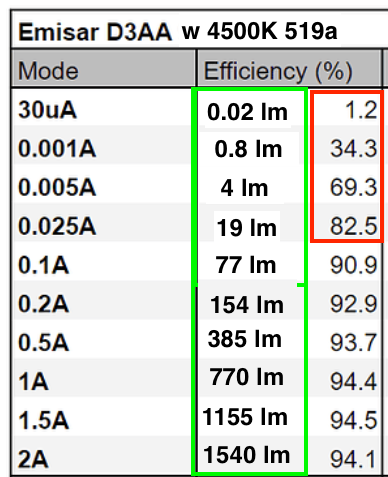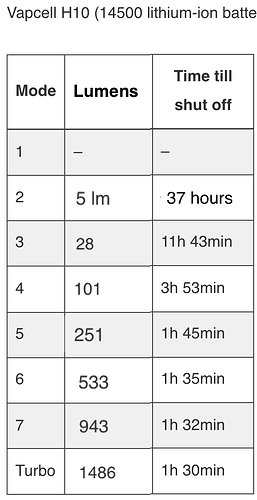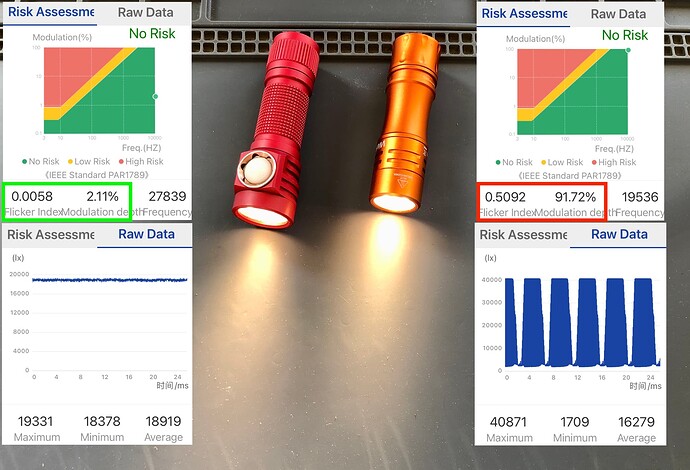I started with two freshly charged Wurkkos 14500 batteries.
Both lights set to as close to 15 lumens as possible.
The lights were On for 13.5 hours.
Voltage readings are from my inexpensive DMM.
Conclusion:
The the TS10 battery voltage dropped to 2.90V, the D3AA dropped to 3.55V
The TS10 dropped to 0.09 lumens, the D3AA sustained the 15 lumen output
=======
Can someone tell me if my lumen estimates (green box) are in the ballpark?.. iow, does the 0.8 lumen level have 34.3% efficiency?

=======
I switched the batteries for this next test, at 5 lumens.
TS10 stepped down to sublumen after 34.5 hours, the battery reached 2.90V and triggered LVP.
The D3AA battery is at 3.54V… and holding near 5 lumens still
=======
I then ran the D3AA for 3 more hours, still at 5 lumens, for a total of 37 hours, when it suddenly stepped down to less than 0.01 lumens, with the battery at 2.99V
a note of caution
When the TS10 and D3AA step down from long runtimes at 5 lumens, it happens suddenly. Essentially giving the operator no warning that the battery is getting low.
Unless the operator is diligent and uses one of the three ways of checking battery voltage on Anduril lights…
- 3C from off, then count the blinks
- Post Off Voltage Display Aux Colors
- Pre On Voltage Display Aux Colors
There is no gradual dimming, no series of steps down, nor any blinking output that will warn the operator before the light goes dark, and leaves you stranded.
So… monitor your battery level… When it gets below 3.5V, the remaining runtime at 5 lumens is about 2 hours…
here is an output and runtime chart thanks to data from 1lumen
=======
Conclusions:
The TS10 has regulated output from the Linear 7135 chip, when running below FET (below 100 lumens).
But the TS10 uses PWM, the D3AA Boost driver has a much lower Flicker Index (data I really appreciate from the Opple).
fwiw, a Flicker Index of 0.0500 or less is considered to have No Negative Biological effects. (Flicker sensitive office workers dont get Migraines)
And the D3AA Boost driver is more efficient than the TS10 when running on the 7135
The D3AA becomes less efficient at low levels, I tried to determine at what output the D3AA becomes as InEfficiet as the TS10. My conclusion is that Below 10 lumens the TS10 has almost the same runtime as the D3AA



